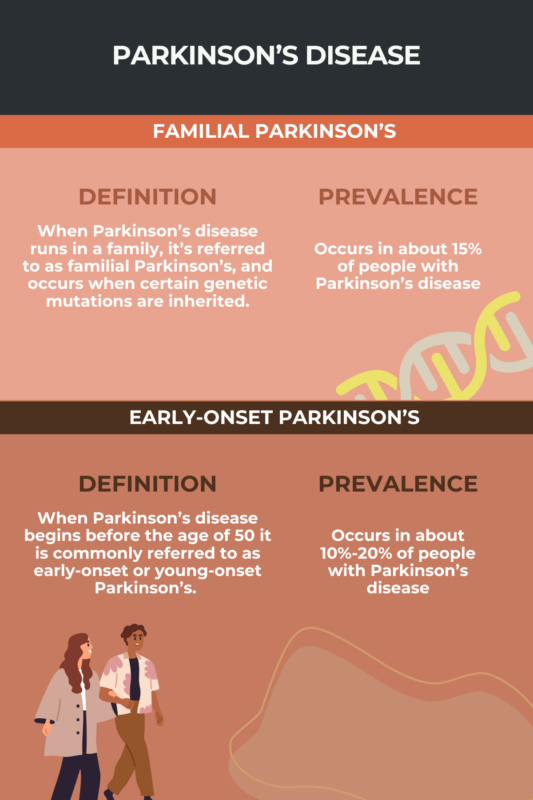FAQs about the types of Parkinson's
Parkinson’s disease refers to a specific neurological condition caused by the progressive death and dysfunction of dopamine-making cells in the brain, leading to characteristic motor symptoms including tremor, rigidity and bradykinesia or slowed movements. There also are several forms of atypical and secondary parkinsonism, where other health problems result in Parkinson’s-like symptoms.
Parkinson’s disease is highly variable, and it doesn’t affect any two people in the same way. Even among people with the same subtype of Parkinson’s, there can be variability in disease symptoms, the age at onset, and rate of disease progression. In general, atypical forms of parkinsonism progress more rapidly than Parkinson’s disease itself.
Parkinson’s disease manifests with a lot of variability, so that even people with the same Parkinson’s subtype can have considerably different experiences and life expectancies. Parkinson’s disease itself, also known as primary parkinsonism, usually is milder and progresses more slowly than the rarer atypical forms of parkinsonism.
Parkinson’s disease, also called primary parkinsonism, is the most common form of parkinsonism. Parkinson’s disease accounts for roughly 80% of all cases where people develop Parkinson’s-like symptoms. Other cases mainly are caused by atypical or secondary forms of parkinsonism, where symptoms develop as a byproduct of other health conditions.
About 15% of Parkinson’s patients have a family history of the disease. These cases, referred to as familial Parkinson’s, typically are caused by mutations in a disease-associated gene that can be passed by parents to their biological children. For most people with Parkinson’s, the disease does not run in families.
Related Articles

 Fact-checked by
Fact-checked by 








